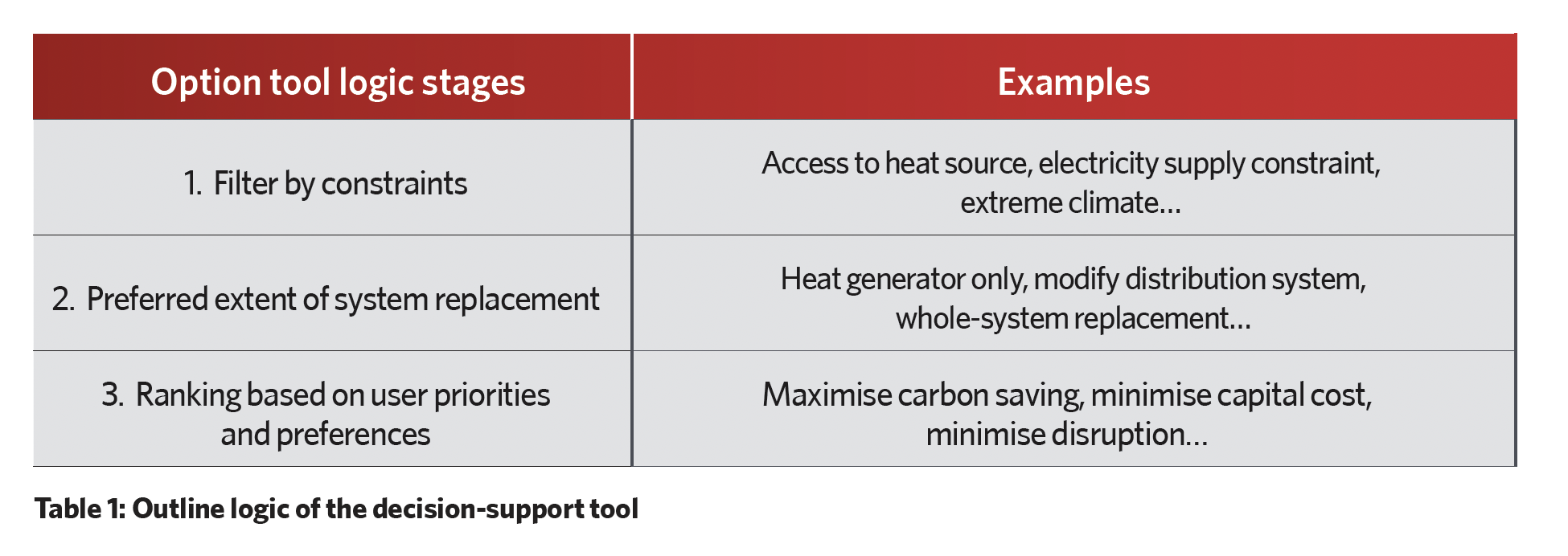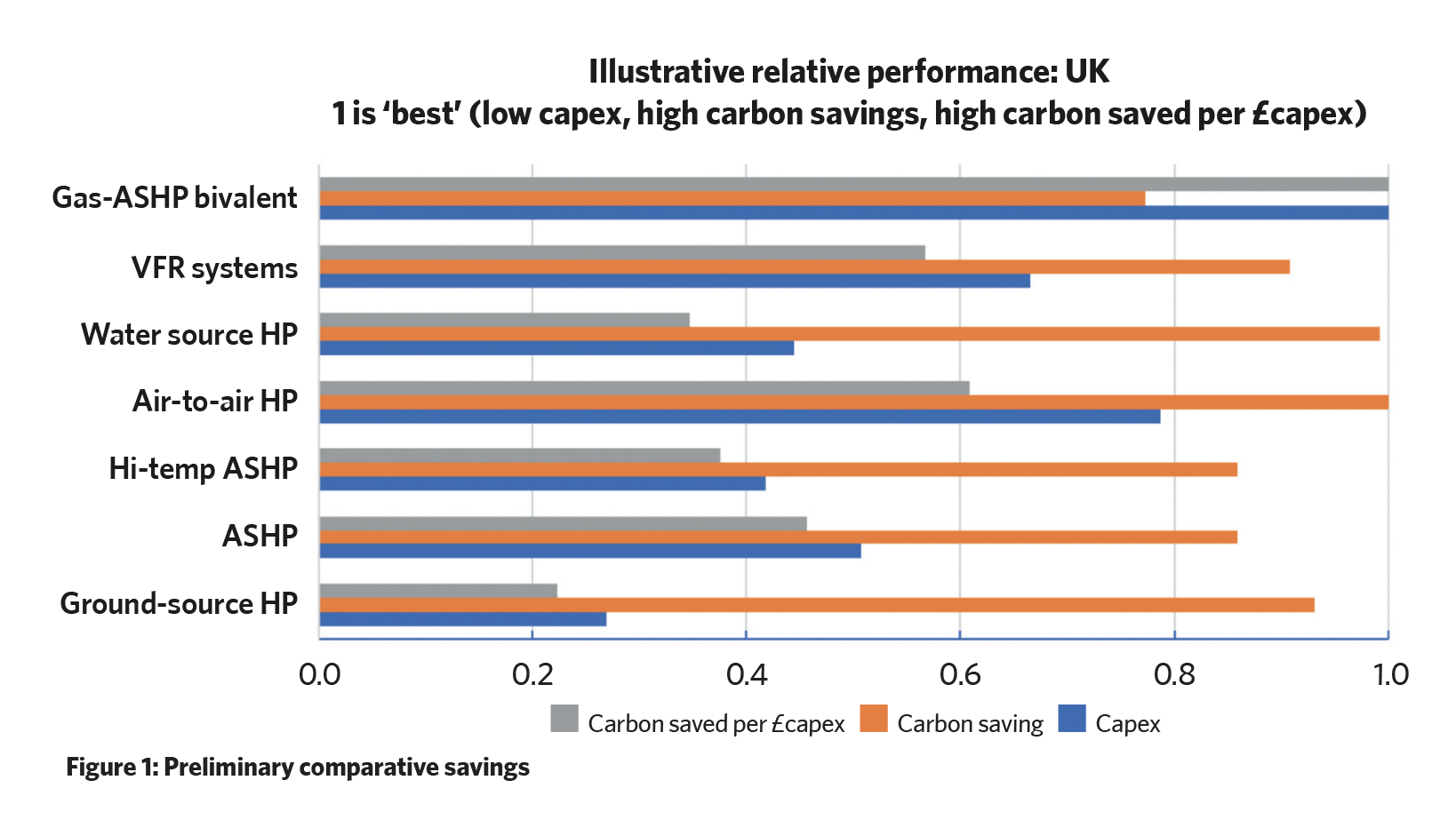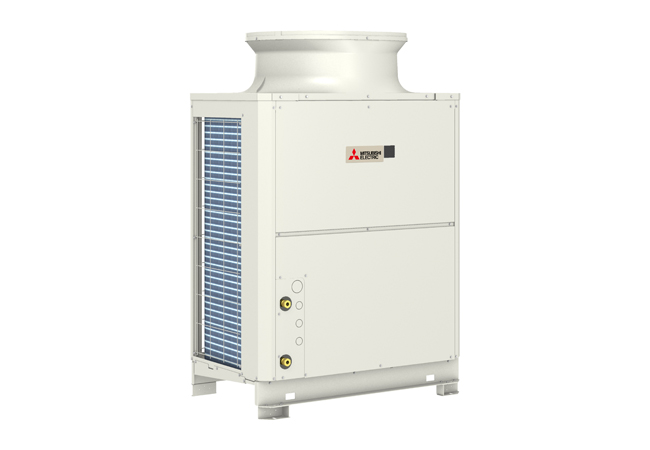
Non-domestic heating makes up 30% of all UK heating systems
The mass deployment of heat pumps in buildings will be key to eliminating the carbon emissions produced by gas-fired boilers if the UK is to meet its target for net zero carbon emissions by 2050.
The rollout of heat pumps powered by low carbon electricity is a central feature of climate change policies in many countries, including the UK, usually with an emphasis on their use in dwellings. Much less attention has been paid to non-domestic buildings, though their aggregate energy consumption for space and water heating is comparable with that in dwellings, and non-domestic heating makes up 30% of all heating systems in the UK.
To encourage the uptake of heat pumps in these buildings, an ongoing UK-led International Energy Agency (IEA) project, Developing the market for retrofitting heat pumps to non-domestic buildings, is looking at providing tools and guidance for building owners and managers of non-domestic buildings. Following a review of literature in the sector, the project felt that there was a particular gap in guidance for building owners, whereas building service engineers are partially catered for by CIBSE AM17: Heat pumps for large non-domestic buildings, one of the few documents on heat pumps in non-domestic buildings.
The project – headed by the Department for Energy Security and Net Zero, alongside organisations in Austria, Canada, Ireland, Italy, and the Netherlands – aims to address the gap in high-level guidance for non-specialists, and collate and share exemplar case studies.
An interactive tool is being developed that will ask users about their existing buildings and systems, and their principal objectives and constraints, before offering them a shortlist of possible system types.
The tool interface will guide users towards the options that appear to be most promising; these can then be evaluated in more detail, using expert advice as necessary. Their shortlist will be linked to generic descriptions of the relevant system types and their principal characteristics, and to two-page summaries of case studies in buildings that resemble their own.
The most suitable choice for a retrofit heat pump system depends on a complicated interplay between: the size, use and complexity of the existing building and its heating system(s); the range of heat pump system options that are possible; and the priorities and concerns of the building owner.
It is likely, especially for smaller organisations, that initial decisions around replacing heating systems will fall to individuals who are not experienced in navigating this maze. At the current low levels of market penetration, they are also unlikely to be familiar with existing heat pump installations. These are the individuals and organisations that this project aims to help.
The decision-support tool will need to map a large number of possible system configurations against the information provided by a tool user. Its basic logic structure – which has been agreed and is now being developed – has three stages that progressively reduce the number of options being considered (see Table 1).

Initially, the tool identifies constraints that limit the range of practicable options; then it focuses on those that are compatible with the existing heat-distribution system; and, finally, it produces the shortlist of options that best match the priorities identified by the tool user.
In most cases, it is expected that the initial two stages will reduce the number of feasible options to a manageable number that can be ranked according to the priorities of the tool user. The third ranking stage requires a set of comparative costs and seasonal efficiencies, such as would be used during design evaluations.
It is expected that tool users will have varied backgrounds, priorities and levels of prior knowledge, reflecting the multiple and sometimes complex procurement procedures that could be used for various levels of retrofit and type of organisation. Guidance will need to be accessible and relevant to, and understandable by, a wide range of ‘decision influencers’.
Exemplar case studies
More than 70 case studies have been identified across the participating countries (including a few in other countries). About 25% are in the UK and are predominantly public sector buildings supported by the Public Sector Decarbonisation Scheme (for which measured performance data is not yet available). In the UK, the projects are predominantly air source heat pumps, often bivalent or high-temperature.
Case studies illustrate the practical application of particular combinations of systems and buildings. With sufficient measured data, they can also provide evidence of performance in use. As the portfolio of case studies grows, the guidance provided by the tool will be compared with systems that were actually selected, which will provide an indication of whether this logic needs modifying.

Preliminary comparative ratings have been carried out on the UK case studies to assess the heat pump types with the lowest capital cost, highest carbon savings and highest carbon savings per £ of capital expenditure (capex). See Figure 1.
- We are keen to collect information from building owners, facilities managers, system designers and contractors who have already been involved in retrofitting heat pumps in non-domestic buildings, or who are thinking about a retrofit. Contact roger.hitchin@hotmail.com
- The project website is: heatpumpingtechnologies.org/annex60


